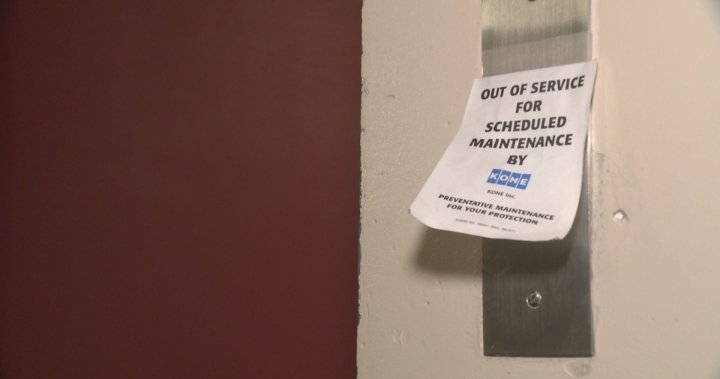After enduring half a year of severely limited mobility, residents at a Langley senior home can finally breathe a sigh of relief as their long-awaited elevator repair has been completed. The situation, which forced elderly residents to navigate stairs or remain confined to their floors, has raised serious questions about infrastructure maintenance standards in residential care facilities across British Columbia.
The elevator at Evergreen Seniors Residence broke down in early January, leaving many residents effectively stranded on their respective floors. For 89-year-old Margaret Wilson, who uses a walker and lives on the third floor, the malfunction transformed daily life into an insurmountable challenge.
“I missed doctor’s appointments, family gatherings, even my weekly card game in the common room,” Wilson told CO24 News. “At my age, six months feels like forever, especially when you’re looking at the same four walls day after day.”
According to facility management, the extended delay stemmed from supply chain issues affecting specialized elevator parts and a shortage of certified technicians. Peter Donaldson, operations manager at Evergreen, explained that the elevator’s control system required components manufactured overseas that were backordered for months.
“We understand the tremendous hardship this caused our residents,” Donaldson said. “We implemented temporary solutions, including staff assistance on stairs and relocation of some activities, but these measures couldn’t fully address the mobility issues many residents faced.”
The situation at Evergreen highlights a growing concern across Canada’s aging infrastructure, particularly in facilities serving vulnerable populations. According to the Canadian Association of Retired Persons (CARP), similar incidents have been reported in senior homes nationwide, with repair timelines often extending beyond acceptable standards.
BC Seniors Advocate Isobel Mackenzie has called for provincial regulations requiring backup systems and expedited repair protocols for essential mobility equipment in senior housing. “This isn’t simply about convenience,” Mackenzie emphasized. “For many seniors, functional elevators represent the difference between independence and isolation, between participating in life and being cut off from it.”
For residents like 92-year-old Thomas Chen, who lives on the fourth floor, the elevator’s return to service represents more than just restored mobility. “You don’t realize how something like an elevator defines your freedom until it’s gone,” Chen remarked while enjoying the sunshine in the facility’s garden for the first time in months. “I’ve missed feeling the fresh air.”
The local municipal council has initiated discussions about implementing stricter maintenance requirements and contingency plans for senior living facilities. Councillor Rebecca Jordan noted that the Evergreen situation “exposed significant gaps in our regulations that need immediate attention.”
Meanwhile, families of affected residents have formed an advocacy group aimed at preventing similar situations in other facilities. The group is proposing mandatory secondary elevator systems in multi-story senior homes and maximum repair timeline requirements with financial penalties for delays.
As residents adjust to their restored mobility, many question remains: in a society where our elderly population continues to grow, how can we ensure that essential infrastructure failures don’t lead to months of isolation for our most vulnerable citizens?









